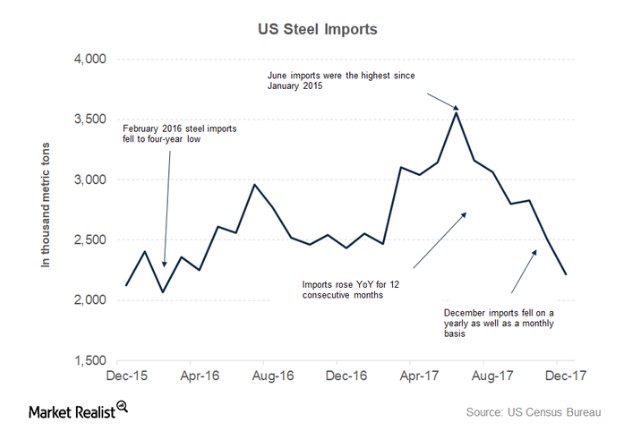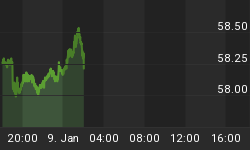Trump’s nod to possible tariffs and massive infrastructure improvement plans could suggest much better days ahead for the U.S. steel industry.
The 500-pound gorilla in the room is the possibility of tariffs, and he’ll either be evicted or left kicking and screaming in the room as of mid-April.
On Monday, Trump caused shares in US Steel (NYSE:X) to spike when he said he was considering a 24-percent tax on imported steel and a 10-percent tax on imported aluminum. US Steel gained 5 percent on the statement, and then pulled back a bit in Tuesday trading.
But the bigger picture for the U.S. steel industry is looking bright, despite concerns that such a hefty tariff could spark a dangerous trade war.
China has been flooding the market with cheap steel, including the U.S. market. The country’s steel production spiked from 127.2 million tons in 2000 to over 806 million tons in 2016.
We’ll know by 11 April, the deadline for Trump’s steel tariff decision, following by a decision on aluminum on 16 April.
Right now, the steel market is riding higher on Chinese production cuts, which could be extended through May or June this year, keeping Asian steel prices higher. Now, there seems to be a solid outlook for this industry and hopes that tariffs will shrink the supply glut and restore global balance to the market.
Two years ago, the market collapsed due to oversupply and major steel players haven’t been able to claw their way back until recently.
But it’s not the movement in a day that the U.S. steel industry is worried about. This is a long-term bet on the industry that should be the backbone of the ambitious $1.5-trillion American infrastructure plan.
Over the past 12 months, U.S. Steel shares are up 15 percent. And the 5-percent jump we saw on Monday is just a blip on the screen: Since talk of such a tariff was first bandied about at the beginning of February, NYSE:X has spiked 28 percent.

(Click to enlarge)
AK Steel (NYSE:AKS) also gained 13.8 percent, while Cleveland-Cliffs (NYSE:CLF), which supplies iron ore to US steel companies, saw its market cap jump 7.6 percent.
In the meantime, are we headed for a major trade war that no one will win?
Depends who you ask. Related: Saudi Billionaire’s Assets Hit Auction Block To Pay $11B In Debt
The U.S. Department of Commerce views cheap steel and aluminum imports as a threat to national security. It’s recommended the 24-percent steel tariff on a dozen countries, while the aluminum tariff would target China, Hong Kong, Russia, Venezuela and Vietnam.
"[T]he Secretary of Commerce concludes that the present quantities and circumstance of steel imports are 'weakening our internal economy' and threaten to impair the national security as defined in Section 232," the department said earlier this month.
National interest is a Pandora’s Box, however, and some fear retributive tariffs. The European Union—a major steel exporter--could move to impose tariffs on various American consumer goods (Kentucky Bourbon, Harley-Davidson) and agricultural products, and China could hit back with tariffs on U.S. soybeans.
But in the meantime, earlier trade actions haven’t been working.
The argument is being made that the US has already taken some trade actions against Chinese steel, and imports from China are now at an all-time low. Last year, Chinese steel accounted for only 2 percent of U.S. steel imports. The problem that other countries have stepped in to fill that gap. Again, though, we’re back to China because the industry says China simply started using Vietnam as a proxy to get its cheap steel into the U.S.

(Click to enlarge)
By Jan Bauer
More Top Reads From Safehaven.com:

















